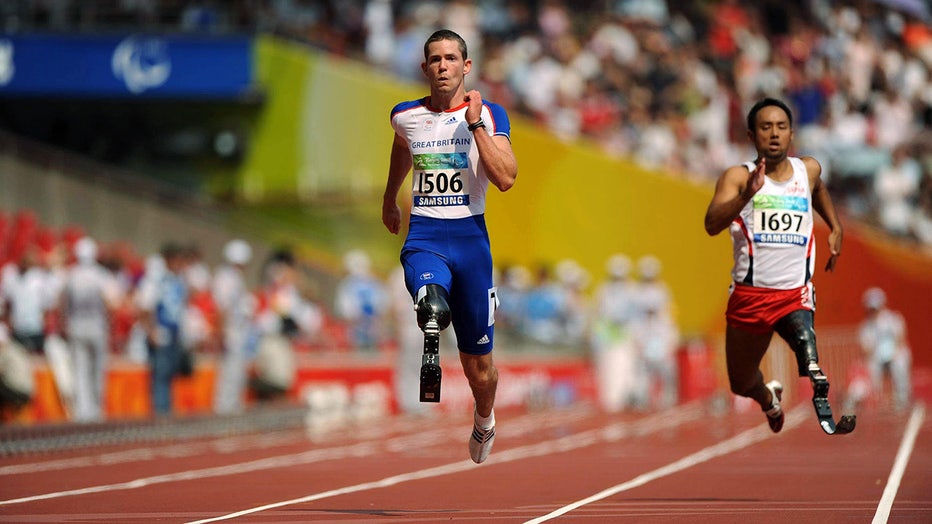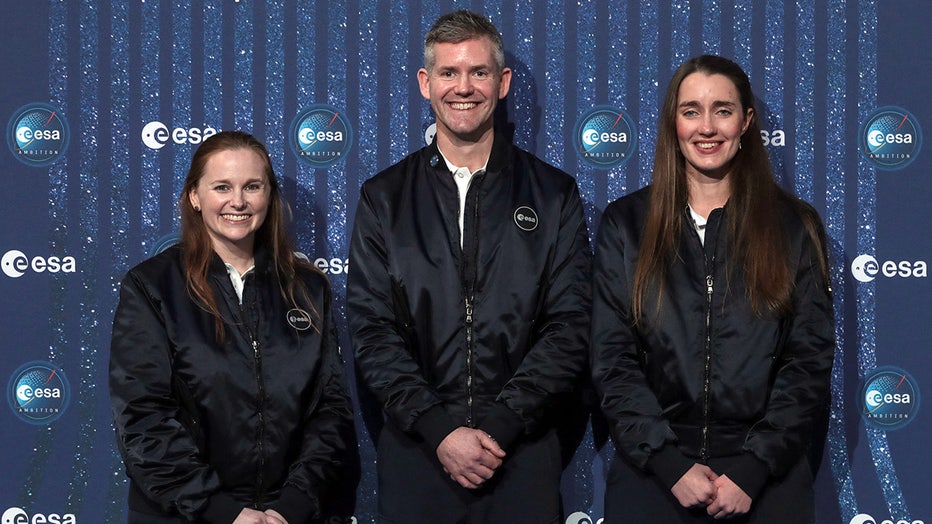Europe's space agency picks first disabled astronaut recruit
These 17 astronaut candidates were among the more than 22,500 candidates who submitted a valid application in 2021 in response to ESA’s call for new astronauts for missions to the International Space Station and beyond. (Photo: ESA / P. Sebirot)
PARIS - The European Space Agency made history Wednesday by selecting an amputee to be among its newest batch of astronauts, complementing that with an unprecedented commitment to one day send someone with a physical disability into outer space.
John McFall, a 41-year-old British former Paralympian who lost his right leg in a motorcycle accident when he was 19, called his selection "a real turning point and mark in history."
"ESA has a commitment to send an astronaut with a physical disability into space... This is the first time that a space agency has endeavored to embark on a project like this, and it sends a really, really strong message to humanity," he said.
The newly-minted parastronaut joins five career astronauts in the final selection unveiled during a Paris news conference which was the culmination of the agency's first recruitment drive in over a decade aiming to bring diversity to space travel.
The selection included France’s Sophie Adenot and the UK’s Rosemary Coogan to address the fact that women in European space travel remain greatly underrepresented. There were however no persons of color among the new recruits. The hiring campaign didn’t specifically address ethnic diversity, but at the time stressed the importance of "representing all parts of our society."

File: Great Britain's John McFall wins the bronze in the Men's 100M T42 Final pic Games 2008, China. (Photo by Julien Behal - PA Images/ via Getty Images)
McFall will follow a different path than his other fellow astronauts by participating in a groundbreaking feasibility study exploring whether physical disability will impair space travel. To date, no major Western space agency has ever put a parastronaut into space, according to the ESA.
"I lost my leg about twenty plus years ago, I’ve had the opportunity to be a paralympic athlete and really explored myself emotionally... All those factors and hardships in life have given me confidence and strength -- the ability to believe in myself that I can do anything I put my mind to," he added.
The feasibility study, that will last two to three years, will examine the basic hurdles for a parastronaut including how a physical disability might impact mission training, and if modifications to spacesuits and aircraft are required.
ESA’s Director of Human and Robotic Exploration David Parker said it was still a "long road" for McFall but described the fresh recruitment as a long held ambition.
Parker said it started with a question. "Maybe there are people out there that are almost superhuman in that they’ve already overcome challenges. And could they become astronauts?"

ESA Astronaut Class of 2022 Meganne Christian (L), John McFall (C), and Rosemary Coogan (R) pose during a ceremony to unveil the European Space Agency new class of career astronauts in Paris on November 23, 2022. (Photo by JOEL SAGET/AFP via Getty Im
Parker also says that he "thinks" it may be the first time the word "parastronaut" has been used, but "I do not claim ownership."
"We’re saying that John (McFall) could be the first parastronaut, that means someone who has been selected by the regular astronaut selection process but happens to have a disability that would normally have ruled him out," he said.
Parker said it would be at least five years before McFall went into space as an astronaut -- if successful.
The new recruits were among the more than 22,000 applicants who came forward in the hiring push announced February of last year by Europe’s equivalent to NASA, including more women than ever and some 200 people with disabilities applied.
ESA specifically sought out people with physical disabilities, for a bold effort to determine what adaptations would be necessary to space stations to accommodate them.
Across the Atlantic, Houston is taking note. Dan Huot, a spokesman for NASA’s Johnson Space Center, home to the American agency’s astronaut corps, told the AP that "we at NASA are watching ESA’s para-astronaut selection process with great interest."
Huot acknowledged that "NASA’s selection criteria currently remains the same" but said the agency is looking forward to working with the "new astronauts in the future" from partners such as the ESA.
NASA stressed that it has a safety-conscious process for vetting future astronauts who might be put in life-threatening situations.
"For maximum crew safety, NASA’s current requirements call for each crew member to be free of medical conditions that could either impair the person’s ability to participate in, or be aggravated by, spaceflight, as determined by NASA physicians," Huot added.
NASA said future "assistive technology" might change the game for "some candidates" to meet their stringent safety requirements.
The European agency received applications from all member nations and associate members, though most came from traditional heavyweights France, Germany, Britain and Italy.
RELATED: You can now watch live views from Orion as capsule swings around the moon
The two-day ESA council running Tuesday to Wednesday in Paris also saw France, Germany and Italy announcing an agreement Tuesday for a new-generation European space launcher project as part of apparent efforts to better compete with Elon Musk’s SpaceX and other rocket programs in the U.S. and China.
The ESA’s 22 European members also announced their commitment to "space ambitions" with a budget rise of 17% -- representing 16.9 billion euros over the next three years. It will fund projects as diverse as tackling climate change to exploring Mars.
___
Associated Press writer Marcia Dunn contributed to this story from Cape Canaveral, Florida.

